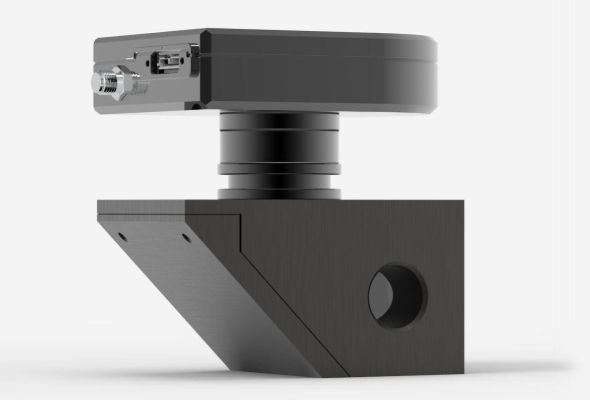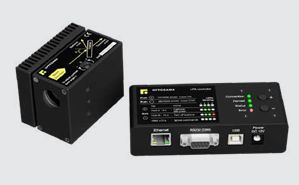decibel (original) (raw)
Author: the photonics expert (RP)
Definition: a logarithmic measure for power ratios, applied e.g. to optical powers or to noise powers
Page views in 12 months: 4172
DOI: 10.61835/3un Cite the article: BibTex plain textHTML Link to this page! LinkedIn
Contents
The decibel (dB) is often used for quantifying the gain of an amplifier or the loss of some optical element, such as an optical fiber or an optical attenuator. The number of decibels is 10 times the logarithm (to base 10) of the power amplification factor or loss factor, or alternatively 20 times the logarithm of the amplitude ratio of the electric field strengths. If there is an exponential gain coefficient ($g$) such that the power amplification factor is ($\exp(g)$), the decibel value is ($10 \: \lg \exp(g) = 10 \: \lg(e) \cdot g ≈ 4.34 \cdot g$). Similarly, one quantifies the insertion loss of some optical component as a decibel value: ($10 \: \lg(P_\rm{in} / P_\rm{out})$).
Such a logarithmic quantity is useful because e.g. the decibel gain values of several amplifiers in a sequence can simply be added to obtain the total gain of the amplifier chain. Similarly, one can add up the decibel values of attenuators used in a sequence.

Figure 1: Scale for converting decibels to power amplification factors and vice versa.
Decibels in the Context of Optical Signals
The decibel is also often used in the context of transmitted signals (e.g., for optical filters) and of noise e.g. of lasers or amplifiers. In the context of optical signals, one is dealing with two different kinds of power, which should of course not be confused:
- There is the optical power of a signal. In the case of direct detection with a photodetector, this is translated into an electrical photocurrent or voltage. In other cases, e.g. with modulation of the optical phase, the optical power is not directly relevant for the signal.
- The modulation power is proportional to the square of the signal amplitude. If the signal is an electrical voltage or current, the signal power corresponds to an electrical power delivered to a given impedance (e.g. 50 Ω). However, one may also take the signal to be an optical power, e.g. in cases with intensity (power) modulation; the signal power is then again related to the square of the signal amplitude and can thus have units of W2 (watts squared).
When the optical input power is doubled while the modulation remains unchanged, the signal power (modulation power) will be increased by a factor of 4. Therefore, 3 dB more optical input power leads to 6 dB more signal power.
Frequently Used Specifications
Some frequently used related specifications are:
- dBc = dB relative to the carrier. This is used e.g. to specify the power of a sideband in a modulated signal relative to the carrier. For example, −30 dBc means that the sideband is 30 dB below the carrier, i.e., it has a 1000 times lower power.
- dBc/Hz: This is used for noise and means dBc in a 1-Hz bandwidth.
- (Of course, this does not mean that there would be twice as many dBc in a 2-Hz bandwidth, as decibels are a logarithmic measure; therefore an interpretation as “dBc per hertz” would not be appropriate!)
- Often, such specifications are calculated from measurements based on a larger bandwidth. For example, if one obtains −25 dBc in a 1-MHz bandwidth, this converts into −85 dBc in 1 Hz, i.e., −85 dBc/Hz. The 60-dB difference reflects the bandwidth reduction by a factor of 106.
- dBm = dB relative to a reference power of 1 mW. This is often used to specify absolute power levels, e.g. of the saturated output power of a fiber amplifier. For example, 23 dBm correspond to 102.3 × 1 mW = 200 mW.
More to Learn
Suppliers
The RP Photonics Buyer's Guide contains 78 suppliers for optical attenuators. Among them:
Vortex Optical Coatings
We design and manufacture custom attenuator coating across a range of 300 nm – 6000 nm for a variety of applications. The main uses of attenuators are protecting sensitive detectors from overload, attaining accurate laser power measurements and being used in filter wheels to balance the system for particularly strong signals.
LASEROPTIK
LASEROPTIK can provide coatings for variable optical attenuators. One can change the transmission by tilting an edge filter, with highest transmission at normal incidence and typical operation for angles of incidence between 0° and 45°.
EKSMA OPTICS
EKSMA Optics offers variable attenuators for linearly polarized laser beams with high performance optics. They are available for Nd host laser applications in the 1040–1070 nm range and for femtosecond applications with broadband Ti:sapphire and Yb:KGW/KYW laser pulses. Manual and motorized versions available, highly customizable and designed for use in laboratory settings. Compact motorized laser power attenuators provide stable and reliable performance even in high power lasers for industrial applications.
Gentec Electro-Optics
Gentec Electro-Optics offers optical attenuators for measurements on high-power laser beams.
Optogama
Optogama designs and manufactures motorized laser power attenuators (LPA) for laser power control. LPA are available for use in the UV, visible, and NIR spectral ranges from 250 nm to 2000 nm. These devices feature a large clear aperture dedicated for considerable size beam applications. All optical elements of these laser power attenuators are made for high LIDT and provide a stable and reliable performance even when using them with high power lasers in industrial applications.
Questions and Comments from Users
Here you can submit questions and comments. As far as they get accepted by the author, they will appear above this paragraph together with the author’s answer. The author will decide on acceptance based on certain criteria. Essentially, the issue must be of sufficiently broad interest.
Please do not enter personal data here. (See also our privacy declaration.) If you wish to receive personal feedback or consultancy from the author, please contact him, e.g. via e-mail.
By submitting the information, you give your consent to the potential publication of your inputs on our website according to our rules. (If you later retract your consent, we will delete those inputs.) As your inputs are first reviewed by the author, they may be published with some delay.
 optical metrology
optical metrology







